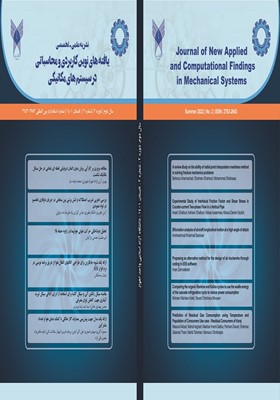Experimental Study of Interfacial Friction Factor and Shear Stress in Counter-current Two-phase Flow in a Vertical Pipe
Subject Areas : Journal of New Applied and Computational Findings in Mechanical Systems
Arash Ghafouri
1
,
Ashkan Ghafouri
2
![]() ,
Abbas kosarineia
3
,
Abbas kosarineia
3
![]() ,
Alireza Daneh-Dezfuli
4
,
Alireza Daneh-Dezfuli
4
1 - Department of Mechanical Engineering, Ahvaz Branch, Islamic Azad University, Ahvaz, Iran.
2 - Department of Mechanical Engineering, Ahvaz Branch, Islamic Azad University, Ahvaz, Iran.
3 - Department of mechanical Engineering, Ahvaz branch, Islamic Azad University, Ahvaz, Iran
4 - Department of Mechanical Engineering, Faculty of Engineering, Shahid Chamran University of Ahvaz, Ahvaz, Iran.
Keywords: Annular flow, Superficial liquid velocity, Superficial gas velocity, Shear stress, Interfacial friction factor,
Abstract :
In the experimental study, the formation of the annular flow pattern in a vertical pipe with the counter-current two-phase flow has been investigated with the help of image recording and processing techniques. After separating the created two-phase flow regime, the range of superficial velocity of air (upward) and water (downward) is 3.66-20.94 m/s and 0.06-0.31m/s for annular flow, respectively. The interfacial friction factor (liquid and gas phase) has been evaluated according to the hydrodynamic parameters of the flow. Comparing the average deviation of the results obtained from the current research with the previous research shows that the results are in good agreement. Also, the interfacial shear stress has been calculated and evaluated for two test pipes in the center-current two-phase flow pattern in the annular flow regime. In this research, the interfacial friction factor (liquid and gas phase) is also presented as a new correlation depending on the Reynolds number of the gas flow and the Reynolds number of the liquid flow with a coefficient of determination of R2=0.98.
_||_


